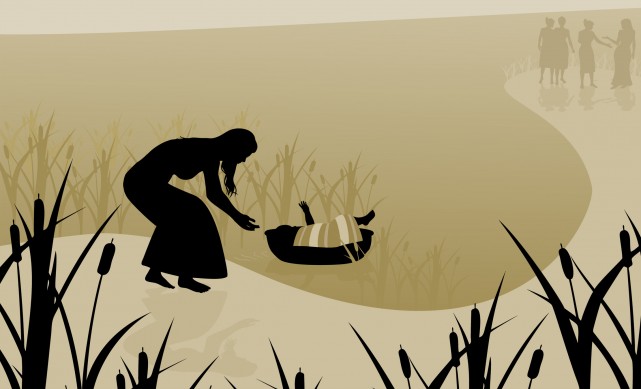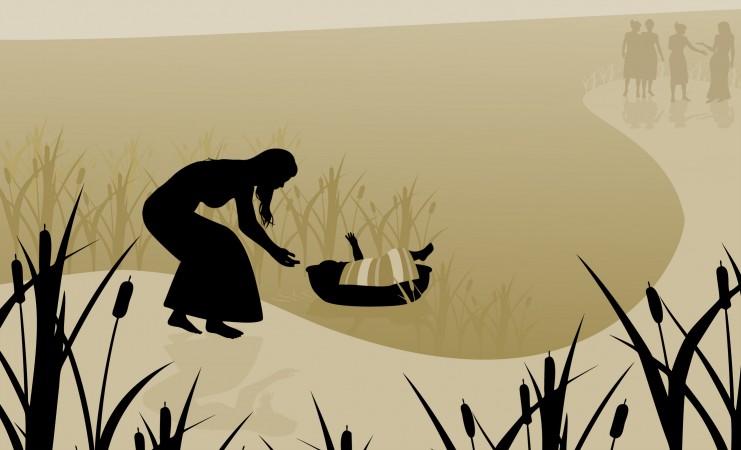When I was a boy, I was given a set of recordings of dramatized Bible stories, and they captivated my attention. They were well-produced audio narrations complete with sound effects like the clanking of swords, rushing waters, roaring lions, chariots, and nails being driven through Jesus’ hands. The stories lodged in my head as I listened to the recordings over and over.
It is common in Christian churches for children to be taught the Bible story by story. Then, somehow, we get the idea that as adults we can handle the higher truths we find in places like the epistles of the New Testament. But this is to miss the grand scheme of the Bible. The backbone of the Bible is story or narrative. If we look at the whole sweep of Scripture from Genesis to Revelation, there is one grand story: the creation, the fall of humanity into sin and corruption, God’s efforts at redeeming humanity, and the final remaking of all things. This is the metanarrative of the Bible.
That big story is divided into two large narratives: God working through a chosen people (the old covenant), and then, with the coming of Jesus, how God forged a new covenant open to people from every part of the world. Break that down further, and we get to the individual stories of Joseph, of the exodus, of Ruth, of Joshua, of the destruction of Jerusalem, of Daniel in Babylon—and hundreds of others. So how should we understand the narratives of the Old Testament, which constitute almost half of the Old Testament text?
1. We should read individual narratives in their specific contexts, but with the wider narratives in mind. The story of Ruth, for instance, is a rich and poignant story within itself, about struggle, commitment, faith, and redemption. But then we learn that Ruth was the great-grandmother of King David, so she fits into the wider Old Testament picture. More amazing, this woman from Moab is listed in the genealogy of Jesus because of her lineage with David (Matt. 1:5). So the significance of the story of Ruth goes beyond her relatives and the harvesting of grain.
2. We should take Old Testament narratives at face value, reading for the natural sense. The purpose of narrative is to tell us what happened and to help us understand the broad significance of what happened. Not every story has a moral. The account of Joshua leading the Hebrews across the Jordan River means exactly that. We should not assume there is some symbolic meaning to the river, or to Joshua, or to the place where they crossed. It is wrong-headed to impose a symbolic or allegorical meaning on a biblical story. It is misleading and it is arbitrary. It assumes there is a hidden meaning to biblical stories, which leaves the normal Bible reader to ask: “I wonder what I’m missing here?” No, we should assume the biblical writer meant something specific, coherent, and intelligible story by story. This is to read Scripture on its own terms, respecting the intentionality of the biblical authors. Taking Old Testament narratives at face value removes much of the anxiety we might have if we are always looking for some supposed hidden meaning.
3. We should also avoid moralizing or spiritualizing every Old Testament story we read.What, for instance, might be the moral to the story of Jacob deceiving his brother Esau and later his uncle Laban, cheating each of them out of a fortune? The text does not condemn what Jacob did, nor does it endorse his actions. The narrative simply tells us what happened. The story of Joshua’s battle for the city of Ai does not mean we ought to obliterate our enemies in life. The story of Isaac finding a wife (Gen. 24) does not give us a method of dating. And Moses going into the tabernacle under the cloud of God’s glory is not a guideline for how we should pray or worship. These stories have great significance in the wider narrative of Scripture, but we reduce that significance when we go looking for a “moral to the story.” However, these stories do illustrate truths or morals that are taught elsewhere in Scripture. That is the best way to read them.
4. We should learn from the complex lives of the characters of biblical stories. We could feel a lot of tension over the fact that even the great heroes of faith in the Old Testament had faults and overt transgressions. The narrative usually doesn’t come right out and flag what was honorable or despicable behavior. It is assumed we will figure that out based on the parts of Scripture that do teach morality. The Bible is wonderfully honest. The characters in the narratives are all sinners, yet they are part of the historic unfolding of the greatest story of Scripture: the story of God.
5. We should read through biblical narrative seeing it as the great story of God who is its central character. The narrative of the Old Testament reveals the Creator of all things as the God of holiness and of love. In the stories we witness the God of holiness for whom right and wrong, good and evil, really do matter. And his love is seen in his patience, forgiveness, guidance, protection, and mercy.
What is true of all great narratives, and especially the narratives of Holy Scripture, is that every time we go through them, we will see something new. A detail here and there. An attitude in one of the characters. A sight, smell, or sound. A silhouette of an attribute of God. And we will see ourselves, not by imposing ourselves on the narrative, but when we recognize a hope we’ve had or devastation we’ve experienced. We see our sins, not just the sins of the characters in the story. And we see hope for all of us who would be without hope if not for the mercy of God.
[Excerpt from How to Understand the Bible: A Simple Guide.]

I’m curious where you got the dramatized audios.